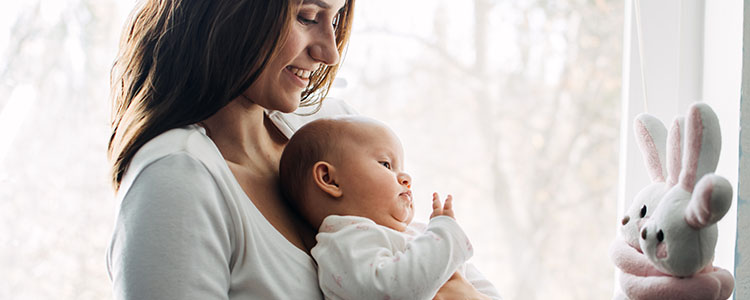

Your body has just completed one of the most impressive feats it will ever perform: the growth of another human. You probably can't wait to bring your newborn home after nine long months of waiting. In the following months, your baby will likely receive a lot of your attention and energy but don't forget that you also need to look after yourself.
Your delivery may have been complicated or straightforward. You might have given birth naturally or through a cesarean section. It's possible that your labour lasted for a few hours or several days. Your body has experienced trauma regardless of how the delivery process went. It will require some time to heal.
Healing from pregnancy and childbirth can take months and perhaps even longer to truly feel like yourself again. You may experience a sense of hostility towards your body during this period. Try not to lose patience. Keep in mind that your body is unaware of your schedule and goals. Rest, eating well, and self-care are the best ways to return to feeling like yourself.
Your hormones will be changing at this time as well. You can have trouble thinking straight and will feel more emotional. Again, allow yourself grace to process this change. However, if you ever have thoughts of injuring yourself or your child, tell someone, as this could be a symptom of postpartum depression.
Having a baby took the more significant part of a year. Feel at ease knowing that you will likely start to feel more like yourself much sooner than that.
Find out more of what to expect during postpartum recovery below:
Your abdomen will hurt as your uterus returns to its regular size and shape (lower belly). These pains are known as "afterpains".
Some of these aches will be intense, but most will be dull. As you breastfeed your child, you may experience more of these pains. This is because nursing prompts your body to contract the uterus.
Many women find that putting heat on the region helps them manage their pain. Think about utilising a hot water bottle or heating pad. Over time, your abdominal pain should lessen. Consult your doctor if these pains persist or get worse.
Bringing your newborn home has you filled with joy. However, this excitement is quickly overshadowed by feelings of depression. For new mothers, in particular, it might be confusing. Be aware that many new moms struggle with sadness in the initial weeks after giving birth.
Hormonal changes are responsible for what is known as the "baby blues", and it is nothing to be embarrassed about. Talking about your feelings to a trusted friend or loved one can make you feel better.
You may have developed postpartum depression if these emotions persist for more than a few weeks or begin to impact your daily life. Baby blues are less severe than postpartum depression. Call your doctor if you're experiencing significant feelings of sadness or hopelessness.
In the days following labour, constipation is very normal. There are numerous potential causes for this. Any painkillers you were given in the hospital might have slowed your bowel movements. It can also be brought on by having anaesthesia (a painkiller) for any reason.
Postpartum constipation can occasionally be caused by fear. This is especially true if you had stitches because you tore the area during delivery. You could be worried about tearing the stitches or be scared that a bowel movement will increase the pain in the area.
Drink a lot of water and eat high-fibre meals to ease constipation. You may also ask your doctor to prescribe a stool softener. Call your doctor if you still haven't had a bowel movement four days after giving birth.
It is typical for women to experience aching breasts and nipples during the first few days of nursing. However, if the pain persists for more than a few days, the baby may not be latching correctly.
Alter your position or ask Dr Maseko to refer you to a lactation specialist for assistance. Do this before painful cracks appear in your nipples, which could prevent you from breastfeeding.
It will take 7–10 days for stitches to heal after a perineum tear or cut. With time, the stitches will be absorbed. By carefully washing them with warm water after each bathroom visit, you can prevent the stitches from becoming infected.
Clean the area with water from a squirt bottle and pat dry. Avoid wiping the area with toilet paper, and try to refrain from touching the stitches. Contact your doctor if the pain in the area worsens or if the stitches are leaking. It might indicate an infection.
It may take some time for sutures from a C-section to heal. The stitches on the skin's surface should heal in 5 to 10 days. The underlying stitches in the muscle layer may require more time to heal. It should take 12 weeks to recover fully. Keep an eye out for any indications of infection. These warning indications include fever, redness, or leaking pus around the incision area.
Even if you had a C-section, it's typical to experience vaginal bleeding and discharge after giving birth (referred to as lochia). This is because the extra blood and tissue needed to grow and nurture your baby are being expelled by your body in this manner. This will likely start heavier (up to 10 days) but gradually taper off.
After delivery, there may be up to six weeks of light bleeding and spotting. It would help if you used sanitary pads only during this period. The use of tampons can spread bacteria and cause an infection. Expect some clots to pass as well, especially in the first week. Contact Dr Maseko if you have clots larger than a coin.
If you have any more questions regarding your recovery period, Dr Maseko will be able to answer them during your postpartum check-up, or you can schedule an additional appointment.